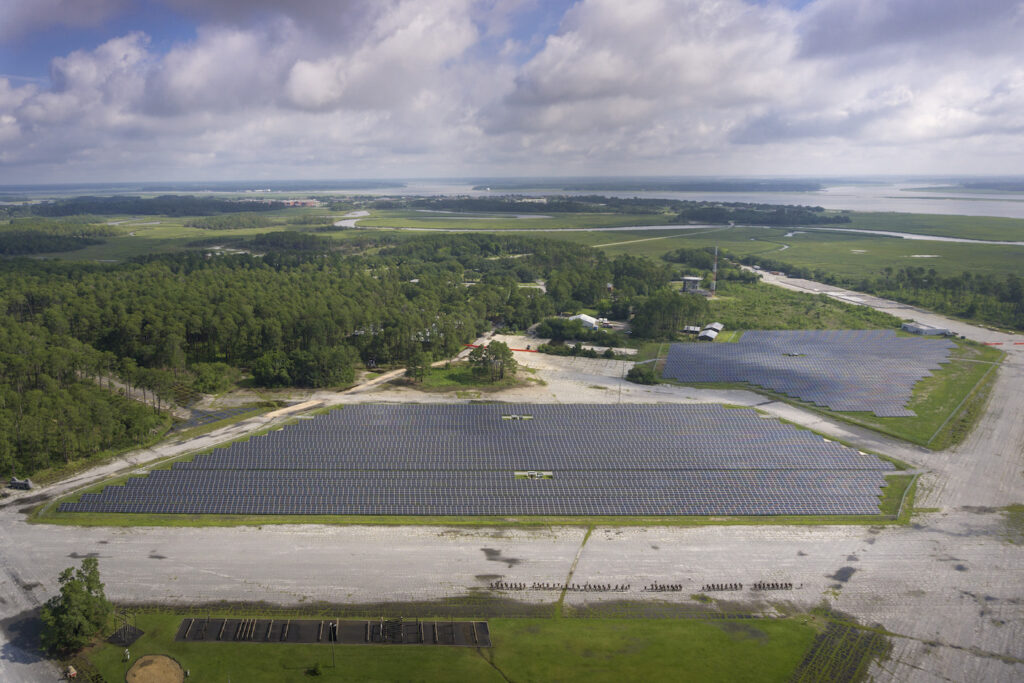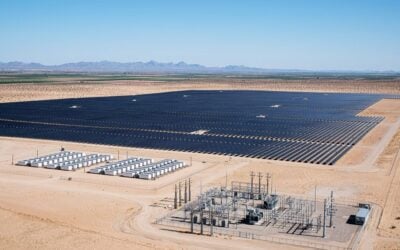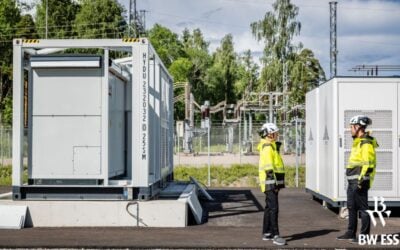
Ameresco will look for energy storage projects to own that the US clean energy solutions company can secure long-term revenues for.
The company, which specialises in integrating energy efficiency and renewable energy equipment for customers that range from federal agencies and corporates to utility companies and cooperatives, has just posted its second quarter 2023 financial results.
Enjoy 12 months of exclusive analysis
- Regular insight and analysis of the industry’s biggest developments
- In-depth interviews with the industry’s leading figures
- Annual digital subscription to the PV Tech Power journal
- Discounts on Solar Media’s portfolio of events, in-person and virtual
The NYSE-listed company recorded revenues of US$327.1 million, and adjusted EBITDA of US$37.4 million for the quarter. Its project backlog across all technologies grew by 9% sequentially, with US$493 million of new awards.
That included the recent award of a 379MWh battery energy storage system (BESS) portfolio for co-location at four natural gas plants in California with independent power producer (IPP) Middle River Power, and a 313MWh deal in Colorado with electric cooperative United Power.
Battery storage is seeing “tremendous growth”, Ameresco CEO George Sakellaridis said, pushed forward by drivers like the need for resiliency and integration of variable renewable energy (VRE) to the grid.
In the US, the Inflation Reduction Act (IRA) and its package of incentives for clean energy has also offered financial benefits, most notably a new 30% investment tax credit (ITC) for standalone energy storage alongside existing ITCs for standalone solar PV and solar-plus-storage.
Indeed, while solar PV comprises the biggest share (66%) of Ameresco’s 426MWe of energy assets in operation, battery storage at 41% represents the biggest portion of the company’s in-development pipeline.
While most of Ameresco’s battery storage activities to date have been as a contractor installing BESS technology, such as on a 2.1GWh, three-project portfolio for California utility SCE currently nearing the end of construction, the company is seeking to own some battery storage projects.
In an earnings call to explain results, analyst Christopher Souther with B. Riley asked about the status of the recently won deals, to which CEO Sakellaridis clarified that for United Power in Colorado, Ameresco will own the asset, whereas for Middle River Power, Ameresco will serve as a project contractor.
Sakellaridis said construction would probably start on the Middle River Power project within the next “couple of months,” while the United Power asset is at a “pretty advanced” stage of development.
‘The fewer merchant revenue streams the better’ for Ameresco
On the strategy of owning BESS assets, analyst Eric Stine at Craig-Hallum Capital Group asked what the “ideal project” would be, given that energy storage assets have different value streams to other assets Ameresco might own, such as thermal or renewable generation.
As we often hear at Energy-Storage.news, energy storage can deliver multiple functions to grid and customers, meaning that in some markets it is possible to stack revenues from different streams. Analyst Stine asked if Ameresco could offer any clarity on how it saw the business model of selling different services with stored energy, versus selling power from a gas or renewable asset.
“We like capacity contracts,” Ameresco senior VP and chief financial officer (CFO) Doran Hole said.
“The fewer merchant revenue streams the better for us. We like the fixed capacity contracts, and if we can make the numbers work by virtue of looking at CapEx, looking at transportation, implementation, [the] speed with which we can get these things underway with a capacity contract, that’s a better looking thing for us,” Hole said.
According to the CFO, the fact that battery manufacturers now offer long-term service agreements (LTSAs) to manage degradation and/or augmentation of battery cells also helps keep Ameresco “comfortable” with long-term fixed capacity contracts.
Sakellaridis added that the financial return is obviously crucial, with Hole clarifying that size of the project is not as important as the metrics proving a long-term business case.
As well as the US, Ameresco is active internationally in the energy storage space, having been revealed as a consortium partner to a winning large-scale BESS project in Canada’s biggest energy storage procurement, earlier this year in Ontario.
As recently heard from our coverage of a supply chain discussion panel at Energy Storage Summit Asia 2023, project developers are having to be more agile in sourcing supply constrained components. Mahdi Behrangrad of Japanese developer Pacifico Energy said his company speaks to multiple battery cell vendors, including Tier 2 as well as Tier 1 providers.
Doran Hole said it was a similar situation for Ameresco, which is “continuing to expand our number of relationships with battery suppliers,” in a market that remains “fragmented”.
When it came to selecting contractors for the company’s biggest BESS project so far, with SCE, a big influence in Ameresco’s competitive procurement was finding partners that could work with an expedited timeline demanded by contracts with the utility.
As regular readers will know, the pandemic and its knock-on effects delayed the project considerably, but the developer has been able to negotiate on terms with its customer, invoking a force majeure clause a few months ago.
Ameresco will continue to run competitive procurements for suppliers and partners on “nearly all” projects in its pipeline, Hole said, while the company is “heavily involved” in the process of choosing battery suppliers together with its system integrators, such as FlexGen, which is working on the SCE portfolio.
Conference call transcript by Seeking Alpha.






